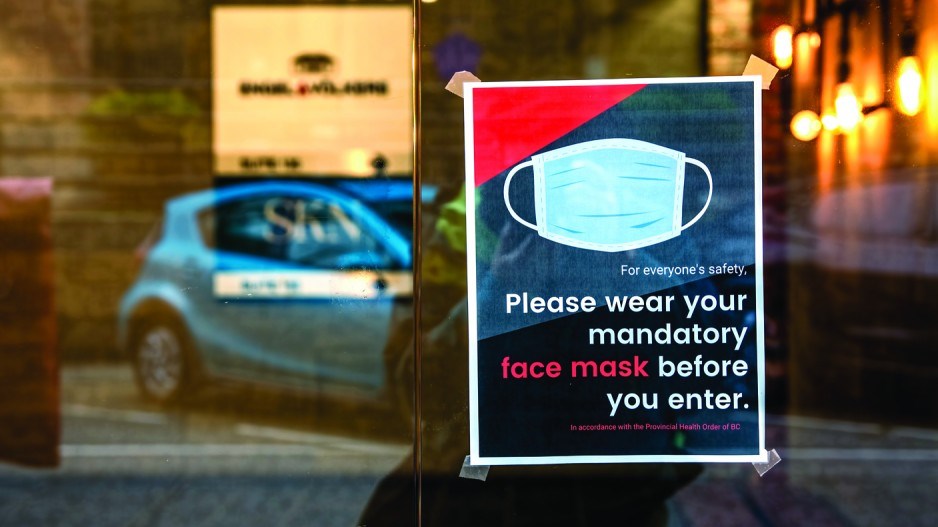“These are the things we do for those we love and for those we don’t know,” Dr. Bonnie Henry said moments after unveiling new restrictions last week aimed at social gatherings and businesses in the eastern portion of the Fraser Valley.
Following a summer that saw the loosening of pandemic-induced restrictions amid rising vaccination rates and falling COVID-19 cases, cooler weather and the return to school quickly brought about new limits on everything from household get-togethers to indoor nuptials for one local health region.
But if more restrictions are ahead for the West Coast as the winter draws people indoors for more potential exposures to the virus, can British Columbians realistically be expected to buckle down again or will government pleas go unheeded?
“It’s becoming increasingly harder for people to not feel stressed out, or discouraged, or overwhelmed and even helpless,” said Caroline McDonald-Harker, an associate professor of sociology at Mount Royal University in Calgary. “As a result, some people may be reluctant to follow new restrictions, particularly if it appears that there really is no end in sight.”
McDonald-Harker specializes in the sociology of disasters.
Unlike most environmental disasters, which present an immediate threat followed by a rebuilding phase, a health crisis such as COVID-19 is much longer and its duration is unknown.
“So what we see is that a lot of people are currently experiencing disaster fatigue, which is a form of essentially emotional and even physical exhaustion that really influences people’s thoughts, their choices, and even their actions,” McDonald-Harker said.
Talking to friends about COVID-19, following media coverage of the pandemic and listening to businesses reiterate the crisis at hand have all contributed to this exhaustion, according to the sociologist.
“But also: the restrictions that continue to be imposed, then removed, only to be re-imposed again” is adding to the disaster fatigue, McDonald-Harker said.
“Having said that, people now are more likely to follow restrictions than when they were first imposed.”
She said it takes about 30 days for people to acclimatize to habit-forming behaviour.
“People were not used to being told that they couldn’t go to certain places, couldn’t do certain things,” McDonald-Harker said.
“People sort of know the drill now; people know what to do.”
Last month’s unveiling of new health restrictions within the Fraser Valley communities of Hope, Chilliwack, Abbotsford, Mission and Agassiz-Harrison might offer a glimpse into what’s in store for the rest of the province if COVID-19 cases don’t taper down. The winter may see more local health regions impose restrictions on private gatherings – limited to five additional people or one individual household – while private outdoor gatherings could be limited to 10 people, unless everyone is vaccinated.
“And this is where the B.C. vaccine card will become important for organized events. That is your proof of having full vaccination,” Henry said, referring to the COVID-19 vaccination certificates deployed last month.
Indoor workplaces may also feel very different in other regions if cases rise.
Workers in Fraser Valley East must now wear masks unless they’re behind a barrier, in a room by themselves or can maintain social distancing.
About 73% of B.C.’s five million residents have been fully vaccinated against COVID-19, leaving about 850,000 people without a jab. The latter number includes children 12 and under, the immuno-compromised and people who’ve so far chosen not to get vaccinated.
But the COVID-19 Delta variant, which emerged as the dominant variant over the summer, is more infectious than the original.
This has led to an increased number of COVID-19 cases, particularly for those not fully vaccinated. At the same time, vaccination rates have risen dramatically since the beginning of the year.
Meanwhile, pandemic-induced disaster fatigue could also have consequences for those already vaccinated, according to McDonald-Harker.
“They might say, ‘Well this summer I went to a festival … I went to a family barbecue, this summer I went to a wedding and I didn’t get COVID – so I probably will not get COVID,’” she said.
“[People] follow that thought process, and let their guard down and perhaps may put themselves and others in risky positions. And it’s important that people just remain vigilant.” •




